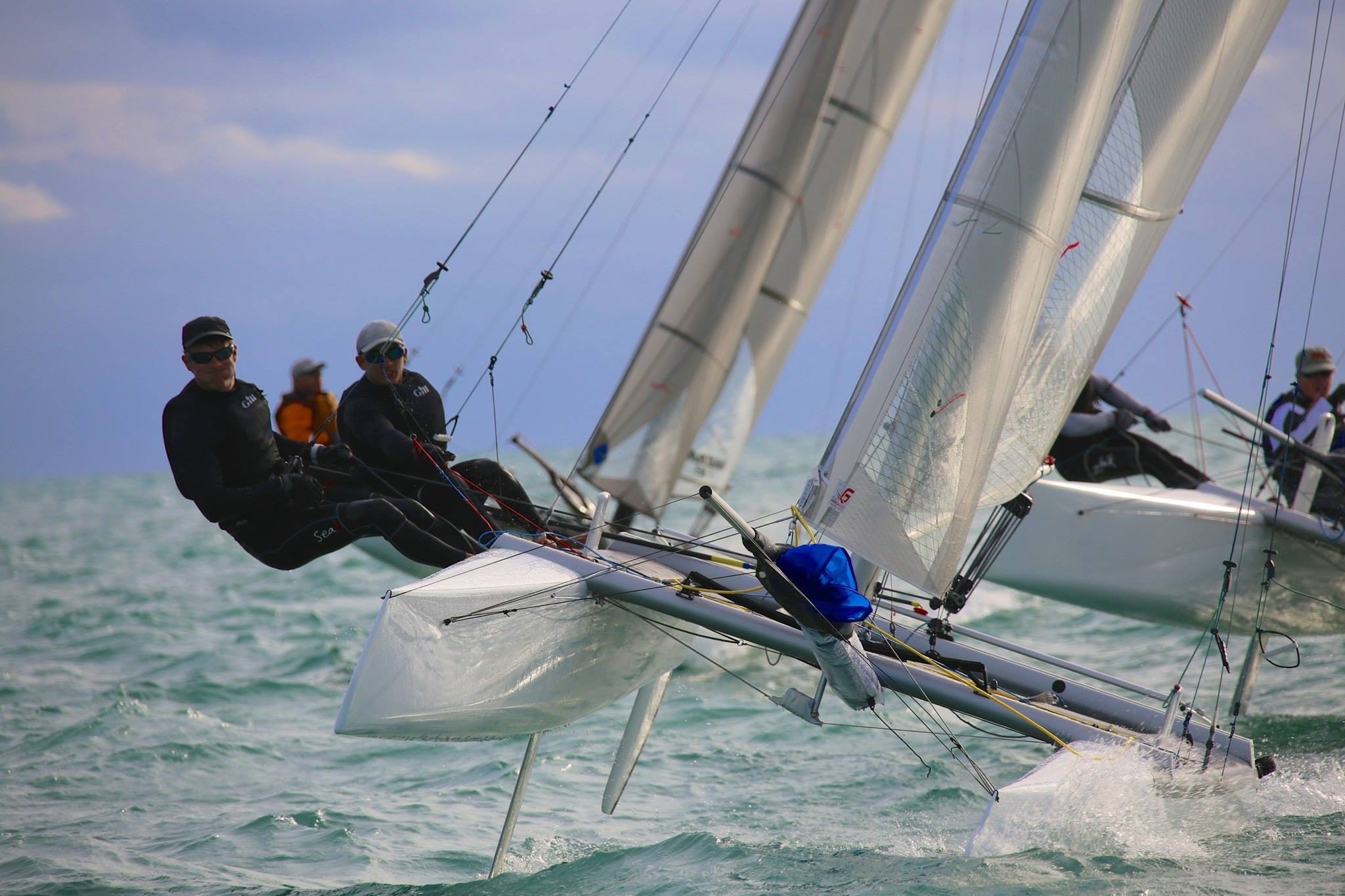Compared to many, I am a relative newcomer to the F18 class but am fortunate to have first met Ravi roughly 10 years ago when he was just getting started in Catamaran sailing. Some of you may remember Rick White’s annual Tradewinds Regatta held on Islamorada- just past Key Largo in the Florida Keys. I think I was attending my 2nd Tradewinds and I remember a couple high school kids showed up from Sarasota. We quickly nicknamed them the Two Yutes (a reference to an early 90s movie “My Cousin Vinny“). And then I watched in dismay as they totally horizoned the fleet. Little did I know I was in the presence of greatness.
I sailed against Ravi again last October in the 2022 F18 worlds in Clearwater. Needless to say I rarely saw him except on the beach. And his recent new watch speaks for itself. After his Yachtsman of the Year award I reached out to Ravi and he graciously agreed to take some time from his super busy schedule to answer some questions regarding the impact of the F18 and the people and fleet it has become.
1) When did the F18 enter the scene for you? Any particularly memorable moments?
I started sailing F18s back in 2011 when we founded the Sarasota Youth Sailing Multihull Team. One of my favorite early memories was competing in the US Youth Multihull Championship at Alamitos Bay Yacht Club. We sent 3 teams and even though the regatta was held in F16s we did all of our training in F18s and a carbon Nacra 20. Those early days of learning to tame the beast were very fun!
2) Who were your mentors then? Any memorable lessons? Was there anything they did that helped you stay engaged in the class?
My mentors who started the mutlihull team were Bryan Paine and Jim Zellmer. I also worked with Robbie Daniel from Red Gear Racing. The best lessons at that time focused on developing feel in the boat. The F18 class has many different designs and we began learning to recognize how they felt and performed differently on the water.

3) Beyond the obvious of winning the ’22 F18 and A Cat Worlds, what do you consider your biggest success and perhaps your most embarrassing moments?
At the moment I would consider my biggest success winning the 2022 A-Cat Worlds. I put a huge amount of time and focused effort in the class from sail design iterations, developing upwind foiling technique in chop, learning my sailing-work balance, and improving my mental game. It was a big moment for me to finally see my process pay off and to succeed again at the F18 Europeans and Worlds with Severin made me even happier with that first result.
The world has probably seen one of my most embarrassing sailing moments! The famous video from 2019 in Auckland NZL of the N17 team flying around into a capsize. Yeah, that was me. It was our first day on the water in New Zealand, still recovering from jet lag and slight illness. It was also an early morning session in a fresh breeze, and we were a bit too eager in the first drill of the day, foiling figure 8s. Hopefully I won’t be doing that again any time soon! [link here for the curious]
4) How does the F18 compare with the other boats you sail now (A, N17, etc.)
I’m also sailing the A-Cat, Nacra 17, and Moth and in comparison the F18 is a great balance of complication and simplicity. It has all of the fundamental controls of the foiling cats, but because it does not foil it allows more people to race at a high level very quickly. This is obvious in the attendance and competitiveness of worldwide regattas.
Because development is allowed within the class rules, sailors and manufacturers are constantly evolving and improving the boats, which helps scratch my engineering itch and results in a more modern boat than most one design classes.
5) Do you see yourself sailing F18s 20 years from now? Why/Whynot?
Absolutely! The beauty of the F18 class is that sailors of a wide age range can enjoy the boat! Before this last year I had taken a 4 year break from F18 sailing to get started in the N17. It was amazing to see how quickly we could get back up to speed and how many skills from other boats carry over. I’m sure I will take breaks from the class from time to time, but it will be hard to stay away from the great racing, people, and just pure sailing.

6) I rarely see collegiate sailors make the jump to F18 after school. Knowing it’s such a good price/performance platform, what could we do to better engage them? Any suggestions on how we can help grow the class?
I would suggest just giving it a try! NAASA in Newport is creating a great program for people to get into the class, so if anyone hasn’t already please check it out. There’s plenty of owners around the country who would love to have new sailors out for a sail or regatta.
Open invitation clinics that target sailors who are not already in the class are also great ways to cast a wider net. I believe many collegiate sailors believe that high performance sailing is too difficult and expensive, but in the F18 this just isn’t true. Give it a try! 14yr old me didn’t regret it when I started back in high school!
7) Do you have any advice to people new to the F18 class on how to quickly improve their results (i.e. most important factors to become good at)?
The best thing to work on in the F18 is developing a feel for the boat. Recognizing what you feel in the control lines, sheets, tiller, through your feet, the trapeze wire, etc. Then associating it with what you can see on the boat. The sail shape, bend in the mast, hull pitch, heel, and sound through the water.
Developing feel helps you self diagnose what is happening with the boat. Coach and expert input on how to make the boat fast certainly helps, but you can’t receive that while racing so it’s important to work on analyzing and trusting your own observations of the boat. And remember, the basic principles of different sailboats still carry over even though it’s a catamaran!
8) What do you focus on when racing F18: Boat Speed? Boat Handling? Strategy?, etc? How do you judge when to “change gears”?
Lately we’ve been focusing on boatspeed and transitions. We are trying to improve in very heavy wind and marginal hull fly conditions. We know to change gears through a combination of input from inside and outside the boat. Inside the boat we see if we are starting to trim a sail towards always tight, or always loose. Always steering toward pinching or footing. Hull flying high or low. Outside the boat we are looking at the big picture. Are we sailing into more or less wind and chop. Are we trying to achieve a goal relative to the boats around us. Or are we on our own and should we just focus on going fast. Developing that feel of the boat really helps us look around and understand what is happening.
We are fairly confident in our boathandling, but we are always doing some practice maneuvers and looking to make incremental gains. We’ve developed a playbook for our maneuvers and strategy depending on the conditions, course layout, and fleet tendencies. This playbook is always being refined.
9) What unique/new skills did you bring back to F18 after sailing A Cat, doing an N17 Olympic Campaign, etc.?
On the water these boats brought mobility and versatility to the F18. Boathandling on our feet, more dynamic movement through and around the boat. Foils require frequent bodyweight adjustments, but even the nonfoiling catamaran benefits from this.
Off the water my experience doing an Olympic Campaign has helped massively. This includes skills in logistics organization, creating a sustainable training plan, equipment development, and even physical training and diet. All of these boats and experiences build on each other.
10) Before you go – any advice you’d give to someone who aspires to the F18?
Find the love in just sailing the boat! There’s so many different things to do in the F18 and that points to its versatility. From short courses, to distance racing, to just going out for a casual sail, the F18 excels at it all. Even on a focused training day we still make time to just reach around, go fast, and have fun. Sometimes that ends up in a sweet video, or a capsize, or seeing a new part of the sailing venue… that’s what it’s all about!

11) Bonus question: Imagine you are able to make one rule change. What would it be?
This is actually a tough one… I have many ideas, but one that came to mind first is allowing 2 mainsail sizes during a regatta. I would propose it with the goal of improving the competitive breeze range of teams of varying weights. Teams would end up with a smaller and bigger mainsail. Light teams would switch to the smaller sail earlier, and bigger teams could develop a deeper sail that the current average without the fear of giving up windy performance. It would also expand the sailable wind range of the boat which is currently around 5-25kts. This would probably never pass as it would add more equipment to everyone’s quiver, but I am enjoying the possibilities this creates in classes like the Moth and would love to try it in a catamaran. Maybe I’ll suggest it for the A!
Jeff Rehm USA 1193
USF18 Secretary

Photo Credits: Jesse Brunsvold and possibly others. Let us know if you know who took them.

